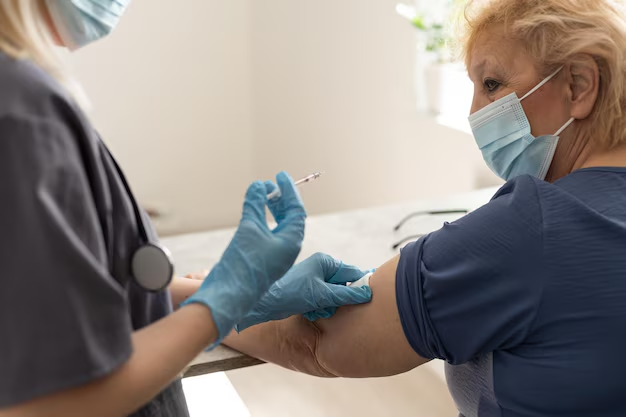Navigating Osteoporosis Treatment: Which Injection Option Is Safest?
Osteoporosis is a condition that gradually weakens bones, making them fragile and more susceptible to fractures. This silent disease often goes unnoticed until a fracture occurs, typically in the hip, spine, or wrist. For individuals seeking effective treatments to maintain bone health, injections have emerged as promising options. Among these, the pressing question arises: What is the safest injection for osteoporosis? Let's delve into the landscape of osteoporosis treatment, exploring various injectable options, their efficacy, and safety profiles.
Understanding Osteoporosis and The Need for Medication
Osteoporosis affects millions of people worldwide, predominantly postmenopausal women, although men are not immune. This condition arises when bone resorption (the process where bone is broken down) outpaces bone formation, leading to reduced bone mass and strength.
Why Consider Injections for Osteoporosis?
While oral medications for osteoporosis exist, not everyone finds them suitable. Reasons range from gastrointestinal side effects to challenges in absorption. Injections offer a direct method of delivering medication, often leading to higher compliance rates due to less frequent dosing schedules.
Exploring Injectable Osteoporosis Treatments
Several injectable treatments are available for osteoporosis, each with unique mechanisms and benefits. Here's a closer look at some of the key players:
Bisphosphonates
Bisphosphonates, such as Zoledronic Acid (Reclast), are one of the most common injectable treatments.
- Mechanism: These drugs work by inhibiting bone resorption, thus strengthening bones.
- Frequency: Zoledronic acid is typically administered once a year.
- Safety: Common side effects include flu-like symptoms following injection. There's a rare risk of jaw osteonecrosis and atypical femoral fractures.
Denosumab (Prolia)
Denosumab is a monoclonal antibody targeting the RANK ligand, a crucial player in bone resorption.
- Mechanism: It effectively reduces bone loss by curtailing osteoclast activity, the cells responsible for bone breakdown.
- Frequency: Administered once every six months.
- Safety: Potential side effects include back pain, hypercholesterolemia, and, rarely, serious infections or hypocalcemia.
Teriparatide (Forteo) and Abaloparatide (Tymlos)
These are parathyroid hormone (PTH) analogs promoting bone formation.
- Mechanism: By stimulating new bone formation, these injections can dramatically increase bone density.
- Frequency: Daily self-injections over a 24-month treatment period.
- Safety: Common side effects include leg cramps and dizziness. Because of a potential risk of osteosarcoma, their use is limited to two years.
Romosozumab (Evenity)
A newer player, Romosozumab, combines bone formation and anti-resorptive effects.
- Mechanism: It inhibits sclerostin, a protein that blocks bone formation.
- Frequency: Monthly injections for 12 months.
- Safety: There's an associated risk of cardiovascular issues, so it's not recommended for individuals with recent heart incidents.
Assessing Safety in Context: Factors to Consider
Determining the "safety" of any medication must consider the patient's overall health, history, and specific circumstances. Here are some factors to weigh:
Medical History and Conditions
- Allergies and Sensitivities: Patients should disclose any known drug allergies to healthcare providers.
- Renal Function: Some medications, particularly bisphosphonates, require healthy kidney function.
- Pre-existing Conditions: Heart diseases or histiocytic hyperlipidemia may impact the suitability of options like Romosozumab or Denosumab.
Lifestyle and Preferences
- Adherence Capabilities: Injections with infrequent dosing may improve adherence for those with busy lifestyles.
- Fear of Needles: For needle-phobic patients, strategies to mitigate anxiety are essential.
Transitioning from Pills to Injectables: Practical Considerations
Switching from oral to injectable osteoporosis treatments is not uncommon, especially if one encounters gastrointestinal issues or poor adherence to daily medications. Some considerations include:
Consultation with Healthcare Professionals
It's vital to have a detailed discussion with an endocrinologist or a rheumatologist to explore:
- Bone Density Results: Recent DEXA scan outcomes can guide the treatment choice.
- Side Effects and Risks: Balancing the benefits against potential side effects tailored to personal health history.
Insurance and Cost
Injections can be more costly than pills; however, insurance coverage often varies. Patients should:
- Explore potential financial assistance programs.
- Inquire about coverage specifics with their insurance providers.
Supporting Bone Health Beyond Medication
While medications play a crucial role, lifestyle adjustments can amplify their benefits and contribute to better bone health:
Nutrition and Exercise
- Diet: Ensure a diet rich in calcium and vitamin D, which are vital nutrients for bone health.
- Physical Activity: Weight-bearing exercises strengthen muscles and bones, reducing fracture risks.
Avoiding Negative Influences
- Smoking and Alcohol: Both can adversely affect bone density and must be moderated or avoided.
- Fall Prevention: Safeguarding the home environment and incorporating balance exercises can prevent falls.
Looking to the Future: Emerging Treatments and Research
The research landscape is rich with potential new treatments and innovations that aim to provide even safer and more effective osteoporosis management options. Science continues to reveal genetic markers that influence bone health, paving the way for personalized medicine approaches.
By understanding these treatment options and their implications, individuals can make informed decisions about their osteoporosis management.
Key Takeaways for Sustainable Bone Health:
- 🩺 Consult Your Doctor: Always discuss treatment options, considering personal health history and preferences.
- 💉 Consider Injectables: For those struggling with oral medications, injections offer a viable alternative.
- 🥦 Eat Bone-Healthy Foods: Prioritize calcium and vitamin D in your diet.
- 🏋️♀️ Stay Active: Regular exercise strengthens bones and improves balance.
- 🚫 Avoid Smoking and Excessive Alcohol: These habits can weaken bones over time.
- 👨⚕️ Stay Informed: Keep up with the latest osteoporosis research for potential new treatment strategies.
This holistic approach ensures not only the safety but also the enhancement of life quality for those managing osteoporosis.

Related Articles
- a Nurse Is Caring For a Client Who Has Osteoporosis.
- a Percutaneous Is Performed To Treat Osteoporosis Related Compression Fractures
- Can Alcohol Cause Osteoporosis
- Can I Do Pilates If I Have Osteoporosis
- Can I Reverse Osteoporosis
- Can Men Get Osteoporosis
- Can Osteoporosis Affect Teeth
- Can Osteoporosis Be Cured
- Can Osteoporosis Be Painful
- Can Osteoporosis Be Reversed